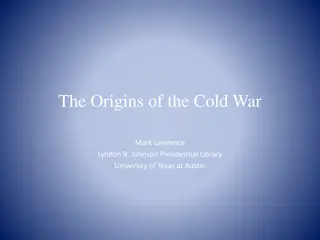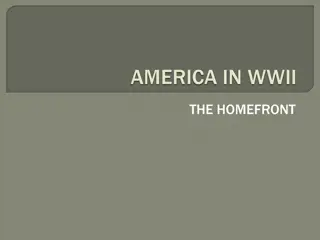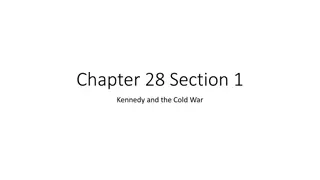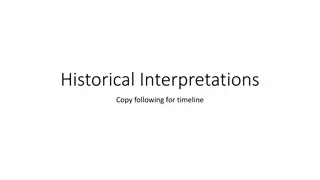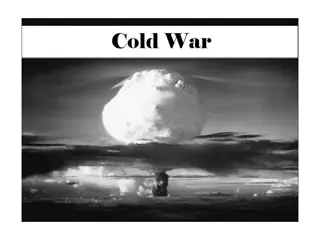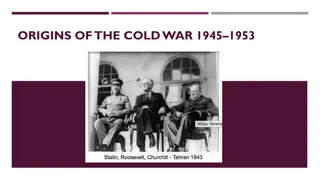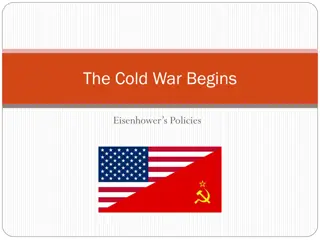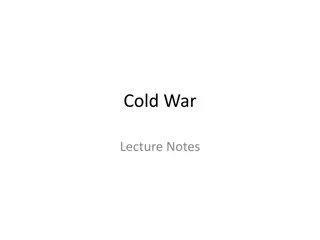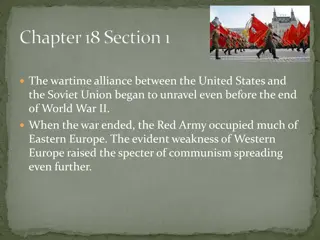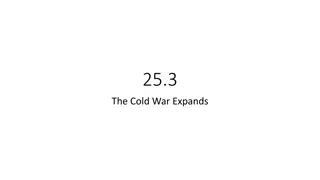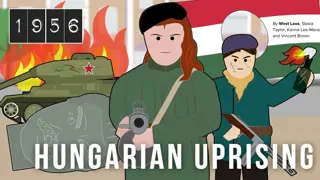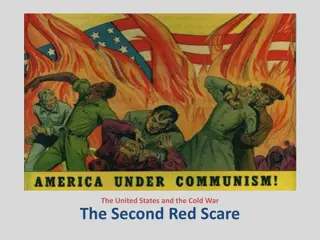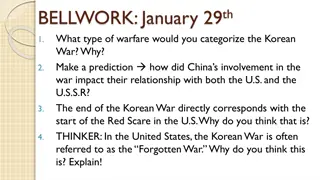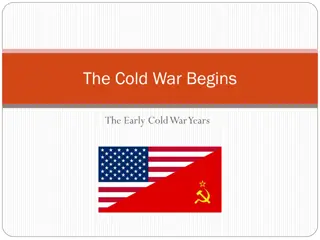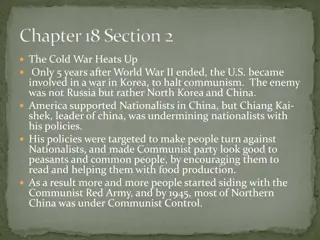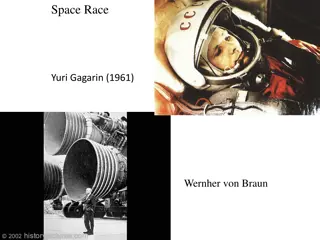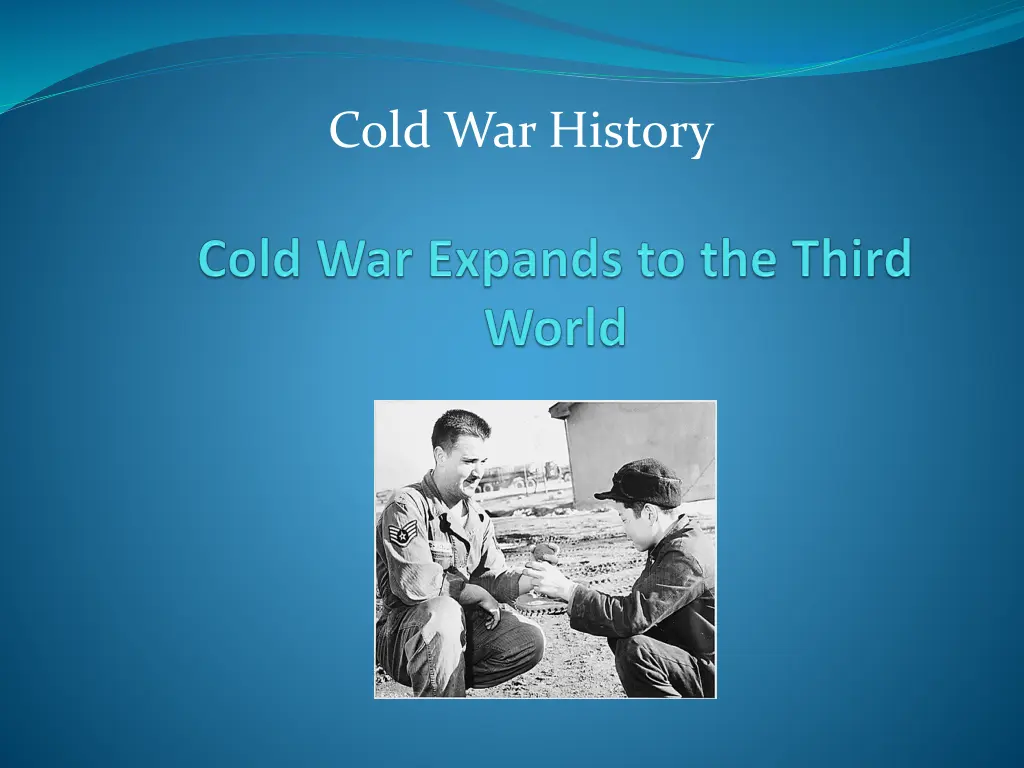
Cold War History: Communist Victory in China to Korean War
Explore the historical events from the Communist victory in China to the Korean War during the Cold War era, including the China Civil War, superpowers' Asian policies, and the involvement of the United States in the Korean War, leading to the division of Korea along the 38th parallel.
Download Presentation

Please find below an Image/Link to download the presentation.
The content on the website is provided AS IS for your information and personal use only. It may not be sold, licensed, or shared on other websites without obtaining consent from the author. If you encounter any issues during the download, it is possible that the publisher has removed the file from their server.
You are allowed to download the files provided on this website for personal or commercial use, subject to the condition that they are used lawfully. All files are the property of their respective owners.
The content on the website is provided AS IS for your information and personal use only. It may not be sold, licensed, or shared on other websites without obtaining consent from the author.
E N D
Presentation Transcript
China Civil war - Communists vs. Chinese Nationalists nationalist leader Chiang Kai-shek Communist leader Mao Tse-tung China Act of 1948. It declared to maintain the genuine independence and the administrative integrity of China, and to sustain and strengthen principles of individual liberty and free institutions in China through a program based on self-help and cooperation. When the Nationalist government collapsed in 1949 and the Communists established the People s Republic of China, Chiang Kai-shek and the Nationalists retreated to the island of Formosa (Taiwan).
Superpowers Asian Policies The Communist victory in China led to a re-evaluation of Moscow s Asian policies Malenkov declared that Mao s victory would lead to a new and higher stage in the people s struggle for independence in Asia In December 1949, Truman approved National Security Council (NSC) 48/2 - basis for escalation of U.S. economic and military assistance to Asia special attention was to be paid to the situation in Vietnam
Korean War 1950-1953 President Truman proposed after WWII a joint occupation of Korea by the two powers where the Soviets would occupied the territory north of the 38 parallel, while the U.S. would control the area south of the line. Neither the Soviet Union or the U.S. wanted the peninsula to fall into the other s hand North Korea s invasion of South Korea in 1950 brought about a United Nations action against the aggressors. That immediately produced heavy military and naval involvement by the United States.
Korean War Although 16 countries sent troops, the Korean War was largely a United States operation Altogether, more than 1,5 million American men and women served in Korea By March 1951, the fighting had stabilized, and Truman was ready to negotiate a settlement to restore the pre-invasion boundary
On 27 July 1953, with a new regime in the Soviet Union and the blunting of a final Communist offensive, negotiations concluded and fighting ended Korea was still divided (38 parallel) The Cold War warmed up
U.S. foreign policy during Eisenhowers era In 1953 it was inaugurated the new U.S. president Dwight D. Eisenhower Two month later the Soviet leader J. V. Stalin died Eisenhower administration sought to portray the USSR as strictly an aggressor state The main Eisenhower adviser in foreign affairs became State Secretary John Foster Dulles - domino theory
Indochina France s long struggle to hold on to its colony in Asia ended in 1954 with the signing of the Geneva Accords Laos and Cambodia became neutral states, while Vietnam was divided along the 17th parallel, with the Vietminh under nationalist Communist leader Ho Chi Minh in control of the North and France and the State of Vietnam (which became the Republic of Vietnam in 1955) governing the South The United States offered support, including military aid, to Ngo Dinh Diem s South Vietnam government
Southeast Asia Treaty Organization ( SEATO) Members: Philippines, Thailand, Pakistan, Australia, New Zealand, Great Britain, France, and the United States
Near and Middle East Eisenhower s policy in the Middle East was to restrict Soviet influence and to keep the oil supply open to the United States and other Western countries Suez Crisis (1956) - Gamal Abdel Nasser nationalized the Suez Canal Eisenhower Doctrine, more than 14,000 American soldiers were sent to Lebanon in 1958 at the request of the pro-Western government
Latin America Since the Monroe Doctrine of 1823, Washington had considered the Western hemisphere its backyard Rio Treaty in 1947 and the Organization of American States in 1948 - the United States had formalized its role as the only major power in this part of the world In 1950, the United States began using covert operations to bring about political change in Latin America In 1954CIA supported the overthrow of the government of Colonel Jacobo Arbenz Guzman of Guatemala
Guatemala 1954 Arbenz supported agrarian land reform United Fruit Company had excellent contacts within the Eisenhower administration CIA was carry out a coup in cooperation with opposition groups in Guatemala

